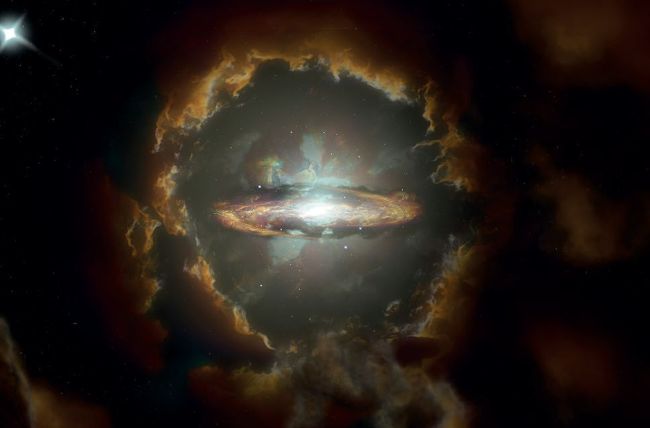Massive galactic disc could change our understanding of galaxies
Words by Chelsea Gohd
A massive, rotating disc galaxy that first formed just 1.5 billion years after the Big Bang could upend our understanding of galaxy formation, scientists suggest in a new study.

The disc galaxy is 70 times the mass of our Sun
©NRAO